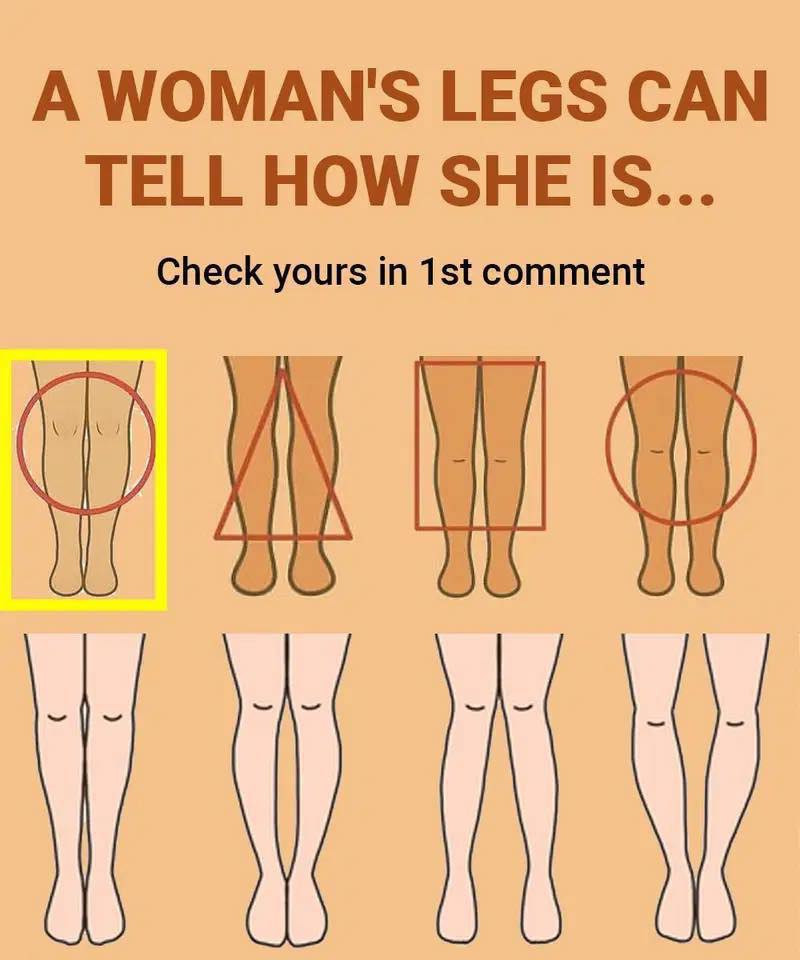ADVERTISEMENT
Certainly! Here’s an informative, reader-friendly article on:
What Can Your Legs Reveal About Your Health?
When it comes to spotting early signs of health problems, most people think of headaches, stomach issues, or fatigue. But your legs can also offer surprising clues about what’s going on inside your body. From your circulation to your nerves and even your heart health, your legs often reflect more than just how far you walked today.
1. Swollen Legs and Ankles
What it could mean:
Swelling in the legs, feet, or ankles — also called edema — can be a sign of poor circulation, heart failure, kidney disease, or liver problems. Fluid builds up when your body isn’t efficiently pumping or filtering blood.
When to see a doctor:
If swelling comes on suddenly, is painful, or is only on one side, seek medical attention promptly — it could indicate a blood clot (deep vein thrombosis).
2. Leg Cramps or Pain at Night
What it could mean:
Frequent cramps or aching in your calves or thighs at night may be due to poor blood flow, nerve compression, or even mineral deficiencies (like magnesium, potassium, or calcium).
Other possible causes:
- Dehydration
- Overexertion during the day
- Peripheral artery disease (PAD) — a condition where narrowed arteries reduce blood flow
3. Cold Feet or Legs
What it could mean:
Constantly cold legs or feet — even in warm weather — could be a symptom of poor circulation or thyroid problems. If one leg feels noticeably colder than the other, it could be a vascular issue like PAD.
What to watch for:
Color changes (pale, blue, or red skin) or slow-healing wounds on the feet can indicate serious circulation problems.
4. Varicose Veins
What it could mean:
Those twisted, enlarged veins — often seen on the backs of legs — can be more than a cosmetic concern. Varicose veins occur when valves in the veins weaken and blood pools, often due to chronic venous insufficiency.
Potential complications:
- Pain or heaviness in legs
- Skin changes or ulcers
- Increased risk of blood clots
5. Numbness or Tingling
Pay attention if:
- The numbness spreads
- It affects both sides of the body
- It’s accompanied by weakness or balance issues
6. Muscle Weakness
What it could mean:
Struggling to stand, climb stairs, or lift your leg could be an early sign of neuromuscular disorders, spinal issues, or autoimmune diseases like multiple sclerosis or lupus. Sudden weakness may indicate a stroke.
7. Restless Legs at Night
What it could mean:
Restless legs syndrome (RLS) causes an uncontrollable urge to move your legs, especially at night. It’s linked to iron deficiency, kidney disease, neurological disorders, or sometimes just lack of sleep.
Treatment options include:
- Iron supplements (if deficient)
- Lifestyle changes
- Prescription medications
-
ADVERTISEMENT
